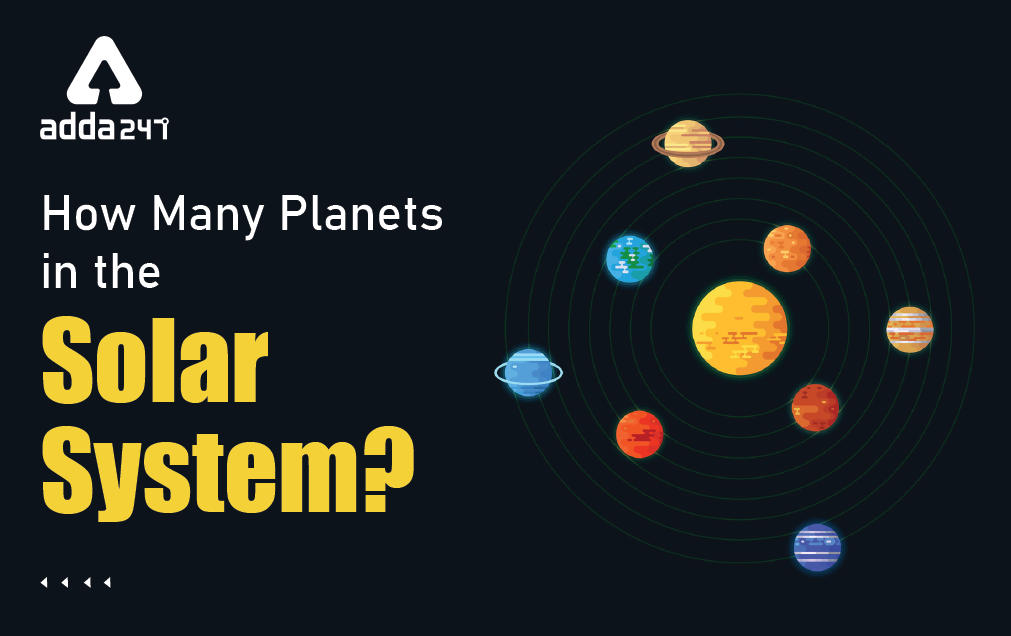Table of Contents
Since, ancient times, our ancestors studied and observed the movements of the Sun, Moon, and other planets that were visible to the naked eyes. This study is called astronomy. With the advent of technology, the science of astronomy has advanced exponentially. Today, the experts are not only studying the movements of stars and planets within our solar system but also other galaxies.
Though man-made satellites and expeditions have contributed to the study of astronomy, we haven’t been able to physically go beyond our solar system. In this article, we will focus on our solar system and all the important facts about the solar system.
What is a solar system?
Solar System is an assemblage of the Sun, Planets and Planetary Satellites. The Sun is an average star within the Milky Way and the planets orbit around it. The solar system was formed due to the gravitational collapse of a giant interstellar molecular cloud around 4.6 billion years ago. The gravitational pull of the solar system plays a pivotal role in the formation and collapse of the stars.
How Many Planets are in the Solar System?
There are 8 planets within the Solar System. All these planets orbit around the Sun. the sizes, composition and orbital timelines of all the planets are different. The order of the planets within the solar system from the Sun is such as Mercury, Venus, Earth, Mars, Jupiter, Saturn, Uranus, and Neptune.
Mercury, Venus, Earth and Mars are called terrestrial planets as their composition includes rocks and metals. Whereas Jupiter and Saturn are called gas giants, they are constituted mainly of helium and hydrogen. Finally, Uranus and Neptune are ice giants as they are composed of volatile substances with relatively high melting points.
Except, for Earth, no other planet is known to have life on it. However, scientists believe that life might exist on another planet in other galaxies.
List of Planets in Solar System
Here is the List of Planets in the Solar System starting from Mercury (the closest planet to the Sun) to Neptune (the farthest planet from the Sun). In the following, candidates will find interesting facts about the planets such as a number of moons, their nicknames and so on.
| List of Planets in the Solar System | |
| Name of the Planet | Facts |
| Mercury | Moons: 0
Year: 88 Earth Days Day: 58.7 Earth Days Type of Planet: Terrestrial Also Known As: Smallest Planet |
| Venus | Moons: 0
Year: 225 Earth Days Day: 243 Earth Days Type of Planet: Terrestrial Also Known As: Morning Star & Evening Star |
| Earth | Moons: 1
Year: 365 Days Day: 24 hours Type of Planet: Terrestrial Also Known As: Green Planet/ Blue Planet |
| Mars | Moons: 2
Year: 1.9 Earth Years Day: 24.6 hours Type of Planet: Terrestrial Also Known As: Red Planet |
| Jupiter | Moons: 79 ( and growing)
Year: 11.9 Earth Years Day: 9.8 hours Type of Planet: Gas Giant Also Known As: Largest Planet |
| Saturn | Moons: 82 (and growing)
Year: 29.4 Earth Years Day: 10.7 hours Type of Planet: Gas Giant Also Known As: Ringed Planet |
| Uranus | Moons: 27 (and growing)
Year: 83.8 Earth Years Day: 17.2 Hours Type of Planet: Ice Giant Also Known As: The Bull’s-Eye Planet |
| Neptune | Moons: 14 ( and growing)
Year: 164 Earth Years Day: 16.1 Hours Type of Planet: Ice Giant Also Known As: The Other Blue Planet |
Why Pluto is no Longer a Planet?
Until 2006, Pluto was considered a planet, however, now it is considered a dwarf planet. After an extensive discussion within the scientific community, it has been concluded that Pluto does not qualify as a planet because it does not comply with various characteristics of a typical planet. Thus, it was excluded from the list of planets in 2006 and given the status of a dwarf planet.
How Many Dwarf Planets in the Solar System?
There are 5 known dwarf planets. Their names are Ceres, Makemake, Eris, Haumea, and Pluto. Pluto is the largest dwarf planet in the solar system. Ceres is the only dwarf planet that lies within the main asteroid belt. Other dwarf planets are located beyond the Kuiper Belt. These dwarf planets do not qualify as a planet because they do not have any clear orbital path. Though they are round, massive and they do orbit around the sun like other planets.
Conclusion
The study of astronomy, which dates back to ancient times, has evolved significantly with technological advancements. While we have made remarkable progress in exploring our solar system and understanding its intricacies, we have yet to physically venture beyond it. The eight planets within our solar system, each unique in composition and characteristics, hold a fascination for scientists and enthusiasts alike.
Furthermore, the reclassification of Pluto as a dwarf planet in 2006 underscores the ever-evolving nature of our understanding of celestial bodies. As we continue to unravel the mysteries of the universe, there is no doubt that our knowledge of our own solar system and beyond will continue to expand, opening new frontiers in the field of astronomy.



 UGC NET Answer Key 2025, Download Shift ...
UGC NET Answer Key 2025, Download Shift ...
 Rajasthan PTET Result 2025 Out @ptetvmou...
Rajasthan PTET Result 2025 Out @ptetvmou...
 UGC NET Geography Cut Off 2025, Subject ...
UGC NET Geography Cut Off 2025, Subject ...




